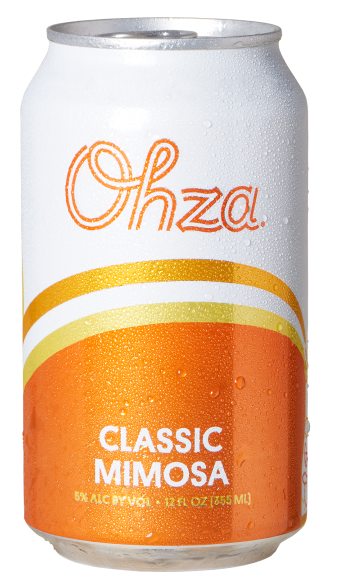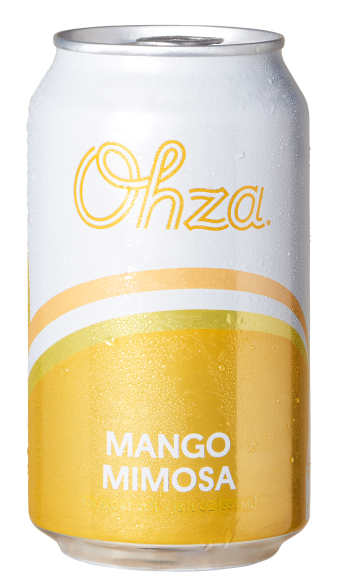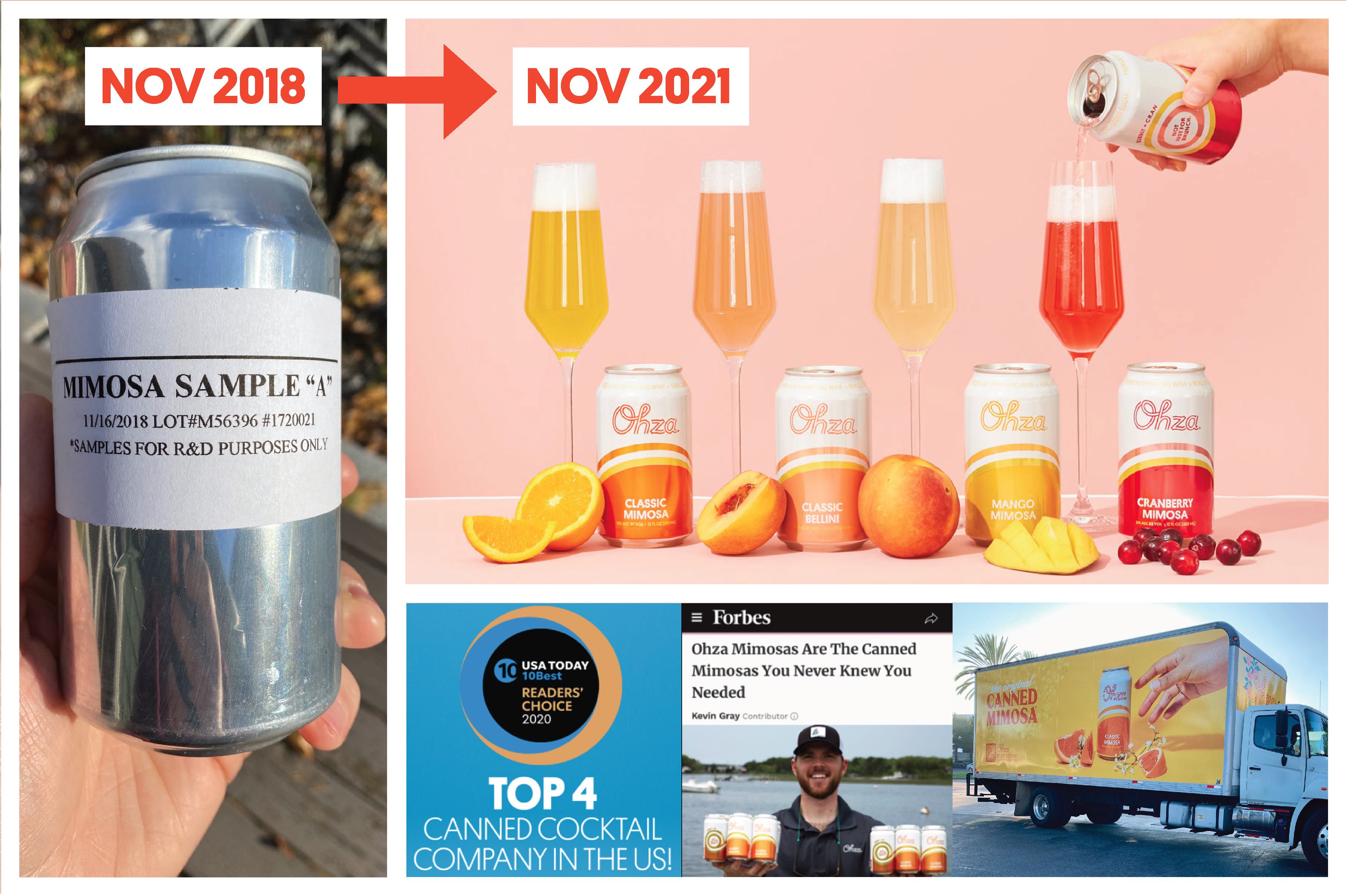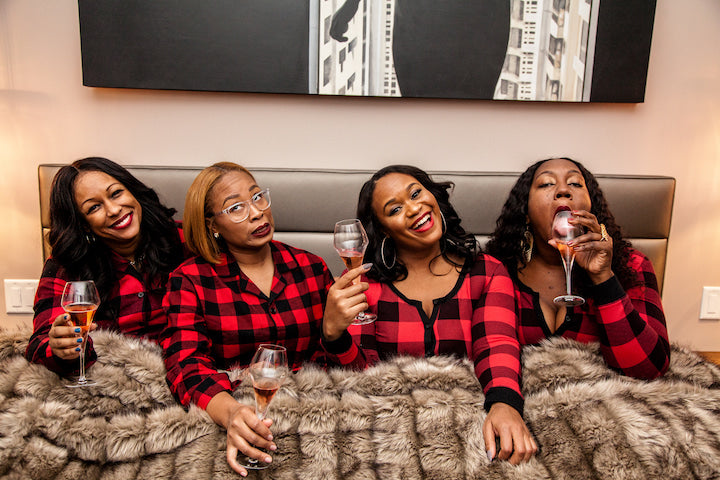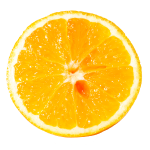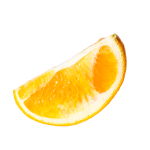How Long Does Champagne Last?

Waiting for the right time to pop open that bottle of Champagne? Are you not entirely certain when the next celebration will be but want to have a bottle on hand just in case? Lucky for you, Champagne has a decent shelf life when unopened.
Champagne is, hands down, one of the finest gifts that you can exchange, so it's essential to make sure it is enjoyed in a timely manner.
While many fine wines have lifespans that last decades, an unopened bottle of bubbly may not be so lucky. Champagne must be enjoyed right after opening and should generally not be stored for more than a decade. But the real question is: How do you know if your Champagne has gone bad?
Let’s dive into specifics! Ohza is here with the breakdown of the shelf life of our beloved bubbly.
Identifying Your Champagne
Before you can determine the shelf life of Champagne, it's important to note a few key things about your bottle. The biggest factor you should keep in mind is whether your Champagne is vintage or non-vintage.
The difference between a vintage and a non-vintage Champagne isn't just the price but also how the grapes have been harvested. Vintage Champagne is made with grapes from a single year, whereas non-vintage Champagne uses those harvested over several years.
Another key difference is in how long the Champagnes hang out in the bottle. Vintage Champagnes must be aged three years, whereas non-vintage Champagnes have to be bottle-aged for 18 months.
Usually, the Champagne bottle will tell you on the label whether you have a vintage or non-vintage bottle by looking at the year it was bottled. While there isn’t a major difference in taste between the two, vintage Champagnes are considered a more expensive choice due to their bottling process and all-around better quality.
Vintage vs. Non Vintage Shelf Life
Generally speaking, vintage Champagnes last longer than non-vintage when stored and left unopened. If unopened and stored properly, vintage Champagne can be shelved and aged for about five to 10 years. Non-vintage bottles can only be shelved for three to four years from purchase when stored properly.
Some vintage Champagnes are designed to age in a bottle before opening, so those bottles may surpass 20 years in their shelf life on specific occasions.
Non-vintage Champagnes are released when they are supposed to be drunk, unlike Vintage Champagnes that can get away with some time to age.
Keeping the Bubbles in Your Champagne
The best part about Champagne, whether vintage or non-vintage, is the bubbles. The classic bubbles are what makes Champagne so iconic. Here are some simple steps to ensure you keep your Champagne as fresh as possible after purchase.
- Pop a Champagne popper into the bottle: Champagne poppers are airtight, which helps the gas stay inside the bottle, thus giving it a little bit of extra life. It can be helpful to do this in between glasses, too, not just when you are on the last leg of your bottle.
- Add a new cork to the bottle: If you have leftover Champagne, using a new cork can help salvage it for a day or two. This is not a sustainable method for long-term storage, though.
- Cling wrap the Champagne: If you don’t have a popper or a cork, simply cling wrapping up the mouth of the bottle can often do the trick. The purpose is to keep the fizz and carbonation inside the bottle. Covering the mouth, even with cling wrap, should do that.
Storing Your Champagne: Cellared and Refrigerated
Champagnes often lose their effervescence over time, but even an inexpensive bottle can last a decent amount of time if stored properly.
What is the proper way to store unopened Champagne? Here’s the run-down.
There are few basics that you need to know to store your Champagne properly.
- Always store your Champagne (and other sparkling wines) in a cool dark place. If you can, try to store them in a basement cellar or a closed cooler, ideally just a place that avoids natural light.
- Maintaining a consistent and cool temperature is key to preserving the Champagne. Most experts recommend storing Champagne at a temperature around 44-47 degrees Fahrenheit. We recommend avoiding places that fluctuate in temperature, like sheds and kitchens.
- Ideally, choose a noise and movement-free area as vibrations, noise, and certain appliances can disrupt the bottles.
- Bottles that will be enjoyed within the month you purchased them can be stored upright. However, Champagne that you are saving can be stored on its side to prevent the cork from drying out.
After opening your bottle of bubbly, you may get three to five more days of life out of it. Champagne is truly best enjoyed right after opening. After opening, most bottles go flat. When the flavors evaporate, the experience may not be as enjoyable.
Once that cork is popped, enjoy immediately! If you decide to save the celebration, use these methods to safely store your Champagne for the next event.
Bubbly Gone Bad?
Worried your Champagne has gone bad or expired? Unfortunately, like most things, Champagne does eventually go bad. The easiest way to tell if your Champagne has gone bad is simply to taste it. When your Champagne goes bad, it will have a strong vinegar smell and taste flat, without any bubbles.
Storing your Champagne properly can help avoid this. If you don’t want to worry about storage, just aim to finish your bottle of bubbly in a timely manner, and you can easily avoid the sourness of bubbly gone bad.
Long-Lasting Champagne Celebrations
Champagne is one of those special beverages set aside often for certain celebrations. But here at Ohza, we think every day is a day worth celebrating. There’s no better day to pop open a bottle (or can) of bubbly than today.
When celebrating with Champagne, you don’t want to waste a drop of it. Storing it properly and enjoying it in a timely manner will help you be able to do just that.
If you find yourself with some leftover Champagne, don’t dump it down the drain. Despite losing some bubbles and maybe some flavor, the Champagne can be repurposed.
Use the leftover bubbly for:
- Champagne ice cubes to use for your next Champagne celebration
- Marinades or pasta sauces
- Wine cocktails (subbing the Champagne for white wine!)
Every last drop of Champagne is worth saving. Whether you decide to repurpose it after opening or celebrate by drinking the whole bottle, Champagne is a beloved celebratory staple. The tradition of toasting with it doesn’t seem to be going anywhere anytime soon.
And if you don’t want to worry about a bottle of Champagne going bad? Just crack open an Ohza Mimosa and enjoy the brilliant bubbles you crave any time.
However you decide to celebrate, Champagne is always a good direction to go. Cheers!
Sources:
How Long Does Champagne Last? Does Champagne Go Bad? | Eat by Date
